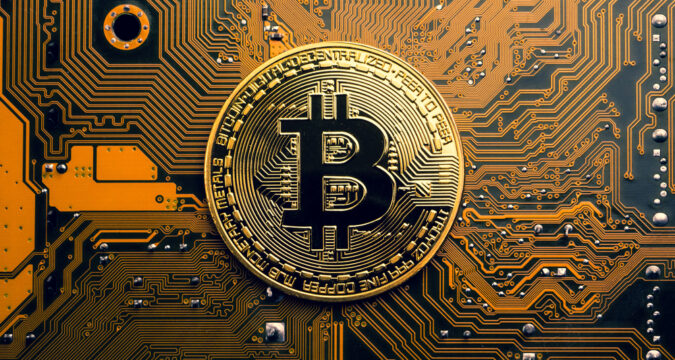
Introduction
In the DeFi sector, many terms are used interchangeably and they can be quite confusing for non-technical users. One such term is blockchain. Most people working with Bitcoin often refer to this network as a blockchain.
At the same time, there is no distinction between blockchains that are issuing other cryptocurrencies and the Bitcoin network in general. However, in reality these terms are not stand-in for each other. They are unique concepts with a few common features. This article is about the differences between Bitcoin and blockchains.
What is Blockchain?
It is imperative to first establish the defining features of a blockchain. Blockchain is distributed ledgers or decentralized digital ledgers. Blockchains are electronic versions of a general journal.
However, blockchains are digitized and they contain blocks rather than pages with a given amount of transaction entries. All blocks are connected in a linear sequence and secured using encryption code. Blockchains can contain various types of data records outside of financial entries.
However, in regards to cryptocurrencies they are mostly concerned with transfer of value. A blockchain is distributed means that its transaction records are distributed among various nodes rather than one single storage server.
Furthermore, a blockchain is decentralized means that it does not require a centralized authority to operate or manage it.
Public blockchains allow anyone to become a node on the platform by downloading a copy of the distributed ledger. The nodes are spread around the globe and participate in the process of validating data and verifying transactions on the network.
In this manner, there is no single point of failure and the same time the blockchain continues to operate without the presence of a central command.
How does a Blockchain Work?
The term blockchain signifies a chain of blocks containing transaction records conducted on that network.
On public blockchains, this data is accessible to everyone but remains immutable. It means that once the transaction is completed, validated, and added to the block record it cannot be changed, removed, or altered. This system ensures that the block records are free from the threat of manipulation or alteration.
Each new verified block is added to the chain of old blocks making a continuous record of transactions on that network. At the same time, blockchain records are secured by encryption method that requires miners to generate hash power to verify these transactions.
Blockchain incentives miners by issuing new tokens as reward for ensuring network integrity. Encryption is expensive to produce and near impossible to edit. In this manner, a blockchain is able to function in a decentralized, distributed, and secure manner.
What is Bitcoin?
Bitcoin is the first blockchain network that issues a native cryptocurrency called Bitcoin. It was first introduced 14 years ago by Satoshi Nakamoto. The name is a pseudonym that represents an individual or group which worked on this network.
Following Bitcoin, many new blockchains and cryptocurrencies were introduced in the DeFi sector. There are some tokens that are issued from decentralized applications hosted on a blockchain.
Bitcoin total supply was capped at 21 million tokens. It means that Bitcoin total supply cannot exceed this number. Bitcoin creators also published Bitcoin Whitepaper to inform the users about all technical points and aspects of this network.
Bitcoin is distributed and decentralized protocol. At the same time, it is open-sourced meaning that anyone can view and copy the source code. In this manner, various developers around the globe have contributed to development of Bitcoin network.
What is a Cryptocurrency?
Blockchains usually issue cryptocurrencies that are digital units representing value of the given network. Cryptocurrencies are medium of exchange that allows users on the platform to transfer value from one point to another in a digital manner.
However, rather than using traditional banking networks these transactions are based on public digital ledger. In this manner, the users on a blockchain can conduct peer-to-peer or direct transactions with each other using a given blockchain network.
Conclusion
Blockchain and Bitcoin are two concepts that are often used in the DeFi sector. All digital ledger allow the users to detract from the limitations of conventional financial systems such as price devaluation, inflation, and centralized control.




